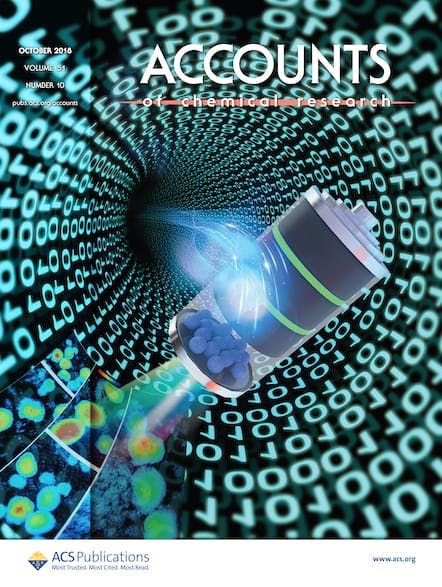The Nobel Prize in Chemistry 2021 is awarded jointly to Benjamin List and David W. C. MacMillan for their work in “the development of asymmetric organocatalysis,” a method that uses small organic molecules as catalysts instead of enzymes or metals. This innovation in molecular construction has led to catalysts that are less expensive and more […]

The Nobel Prize in Chemistry 2021 is awarded jointly to Benjamin List and David W. C. MacMillan for their work in “the development of asymmetric organocatalysis,” a method that uses small organic molecules as catalysts instead of enzymes or metals. This innovation in molecular construction has led to catalysts that are less expensive and more environmentally friendly, while also opening up new pathways in pharmaceutical research.
“Asymmetric organocatalysis offers a new way of thinking and a more sustainable way of carrying out crucial chemical reactions,” said ACS President H. N. Cheng. “In the big picture, the ability to create new compounds to address human problems is the strength of chemistry. Chemists are like magicians, and with asymmetric organocatalysis, we have a new magic wand for making important drugs.”
Both winners have long histories with the ACS. List has been a member of ACS for 21 years; MacMillan for 26. List has been honored by the ACS with both the 2022 Herbert C. Brown Award for Creative Research in Synthetic Methods and the Arthur C. Cope Scholar Award in 2014. MacMillan won the Gabor A. Somorjai Award for Creative Research in Catalysis in 2018, the ACS Award for Creative Work in Synthetic Organic Chemistry in 2011, the Arthur C. Cope Scholar Award in 2007, and the Elias J. Corey Award for Outstanding Original Contribution in Organic Synthesis by a Young Investigator in 2005.
Benjamin List and David W. C. MacMillan have each published many articles in ACS Publications journal over the years. The following articles from each of the laureates will be made free-to-read for 30 days, starting October 6, 2021, in honor of their win.
Benjamin List
Asymmetric Enamine Catalysis
Chem. Rev. 2007, 107, 12, 5471–5569
DOI: 10.1021/cr0684016
Aldolase Antibodies of Remarkable Scope
J. Am. Chem. Soc. 1998, 120, 12, 2768–2779
DOI: 10.1021/ja973676b
The Direct Catalytic Asymmetric Three-Component Mannich Reaction
J. Am. Chem. Soc. 2000, 122, 38, 9336–9337
DOI: 10.1021/ja001923x
Direct Catalytic Asymmetric α-Amination of Aldehydes
J. Am. Chem. Soc. 2002, 124, 20, 5656–5657
DOI: 10.1021/ja0261325
Enamine Catalysis Is a Powerful Strategy for the Catalytic Generation and Use of Carbanion Equivalents
Acc. Chem. Res. 2004, 37, 8, 548–557
DOI: 10.1021/ar0300571
Proline-Catalyzed Direct Asymmetric Aldol Reactions
J. Am. Chem. Soc. 2000, 122, 10, 2395–2396
DOI: 10.1021/ja994280y
David W. C. MacMillan
New Strategies for Organic Catalysis: The First Enantioselective Organocatalytic 1,3-Dipolar Cycloaddition
J. Am. Chem. Soc. 2000, 122, 40, 9874–9875
DOI: 10.1021/ja005517p
New Strategies in Organic Catalysis: The First Enantioselective Organocatalytic Friedel−Crafts Alkylation
J. Am. Chem. Soc. 2001, 123, 18, 4370–4371
DOI: 10.1021/ja015717g
New Strategies for Organic Catalysis: The First Highly Enantioselective Organocatalytic Diels−Alder Reaction
J. Am. Chem. Soc. 2000, 122, 17, 4243–4244
DOI: 10.1021/ja000092s
The Enantioselective Organocatalytic 1,4-Addition of Electron-Rich Benzenes to α,β-Unsaturated Aldehydes
J. Am. Chem. Soc. 2002, 124, 27, 7894–7895
DOI: 10.1021/ja025981p
The First Enantioselective Organocatalytic Mukaiyama−Michael Reaction: A Direct Method for the Synthesis of Enantioenriched γ-Butenolide Architecture
J. Am. Chem. Soc. 2003, 125, 5, 1192–1194
DOI: 10.1021/ja029095q
Enantioselective α-Arylation of Aldehydes via Organo-SOMO Catalysis. An Ortho-Selective Arylation Reaction Based on an Open-Shell Pathway
J. Am. Chem. Soc. 2009, 131, 33, 11640–11641
DOI: 10.1021/ja9026902
Read More About the Nobel Prize in Chemistry 2021 in C&EN.
Want the latest stories delivered to your inbox each month?

Accounts of Chemical Research
Read our latest issue. Want to contribute to this journal?